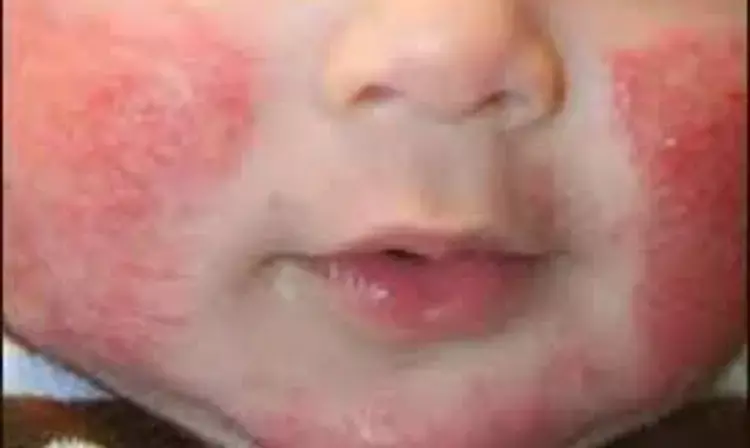- Home
- Medical news & Guidelines
- Anesthesiology
- Cardiology and CTVS
- Critical Care
- Dentistry
- Dermatology
- Diabetes and Endocrinology
- ENT
- Gastroenterology
- Medicine
- Nephrology
- Neurology
- Obstretics-Gynaecology
- Oncology
- Ophthalmology
- Orthopaedics
- Pediatrics-Neonatology
- Psychiatry
- Pulmonology
- Radiology
- Surgery
- Urology
- Laboratory Medicine
- Diet
- Nursing
- Paramedical
- Physiotherapy
- Health news
- Fact Check
- Bone Health Fact Check
- Brain Health Fact Check
- Cancer Related Fact Check
- Child Care Fact Check
- Dental and oral health fact check
- Diabetes and metabolic health fact check
- Diet and Nutrition Fact Check
- Eye and ENT Care Fact Check
- Fitness fact check
- Gut health fact check
- Heart health fact check
- Kidney health fact check
- Medical education fact check
- Men's health fact check
- Respiratory fact check
- Skin and hair care fact check
- Vaccine and Immunization fact check
- Women's health fact check
- AYUSH
- State News
- Andaman and Nicobar Islands
- Andhra Pradesh
- Arunachal Pradesh
- Assam
- Bihar
- Chandigarh
- Chattisgarh
- Dadra and Nagar Haveli
- Daman and Diu
- Delhi
- Goa
- Gujarat
- Haryana
- Himachal Pradesh
- Jammu & Kashmir
- Jharkhand
- Karnataka
- Kerala
- Ladakh
- Lakshadweep
- Madhya Pradesh
- Maharashtra
- Manipur
- Meghalaya
- Mizoram
- Nagaland
- Odisha
- Puducherry
- Punjab
- Rajasthan
- Sikkim
- Tamil Nadu
- Telangana
- Tripura
- Uttar Pradesh
- Uttrakhand
- West Bengal
- Medical Education
- Industry
Sclerotherapy for Infantile Hemangiomas improves adverse effects

Sclerotherapy treatments for infantile hemangiomas (IH) and pyogenic granuloma (PG) demonstrated positive outcomes and moderate side effects equivalent to venous malformation (VM), says and article published in Dermatologic Surgery.
The most popular method of treating varicose and spider veins that appear on the legs is sclerotherapy. Additionally, it is utilised to alleviate the hurting, swollen, and burning sensations brought on by these illnesses. A wide variety of disorders known as vascular anomalies cause an aberrant number, configuration, or location of blood vessels.
Many categorization schemes were put out, but it was James Wardrop who distinguished in 1818 between real hemangiomas and the less frequent vascular malformations. The majority of lesions caused by venous malformations can be successfully treated with sclerotherapy. This study was carried out by Chenzi Yang and colleagues to evaluate the efficacy of foam sclerotherapy in treating infantile hemangioma and pyogenic granuloma. They also examined the information and effects of foam sclerotherapy for the venous malformation.
Clinical outcomes, resolution rates, and complication rates were compared for 39 patients with hemangiomas and 83 patients with VMs after treatment. The VM group's sclerotherapy data were also examined.
The key findings of this study were:
The three groups' distribution and tissue involvement of lesions, as well as the patients' average age, were substantially different (p < .001).
While it was less in the PG group than in the infantile hemangioma group (p < .0001), the average volume of sclerosing foam delivered each session in VMs was considerably greater than that in the other 2 groups (p < .0001).
However, there was no discernible difference between the 3 groups in terms of overall treatment effectiveness and side effects.
When treating VMs, the utilization of 3% polidocanol and ultrasound-guided foam sclerotherapy rose from superficial to deep lesions, but the use of 1% POL declined (p < .0001).
Reference:
Yang, C., Li, M., Li, X., Zhu, J., & Shu, C. (2023). Foam Sclerotherapy in the Treatment of Hemangiomas and Venous Malformations. In Dermatologic Surgery. Ovid Technologies (Wolters Kluwer Health). https://doi.org/10.1097/dss.0000000000003857
Neuroscience Masters graduate
Jacinthlyn Sylvia, a Neuroscience Master's graduate from Chennai has worked extensively in deciphering the neurobiology of cognition and motor control in aging. She also has spread-out exposure to Neurosurgery from her Bachelor’s. She is currently involved in active Neuro-Oncology research. She is an upcoming neuroscientist with a fiery passion for writing. Her news cover at Medical Dialogues feature recent discoveries and updates from the healthcare and biomedical research fields. She can be reached at editorial@medicaldialogues.in
Dr Kamal Kant Kohli-MBBS, DTCD- a chest specialist with more than 30 years of practice and a flair for writing clinical articles, Dr Kamal Kant Kohli joined Medical Dialogues as a Chief Editor of Medical News. Besides writing articles, as an editor, he proofreads and verifies all the medical content published on Medical Dialogues including those coming from journals, studies,medical conferences,guidelines etc. Email: drkohli@medicaldialogues.in. Contact no. 011-43720751


